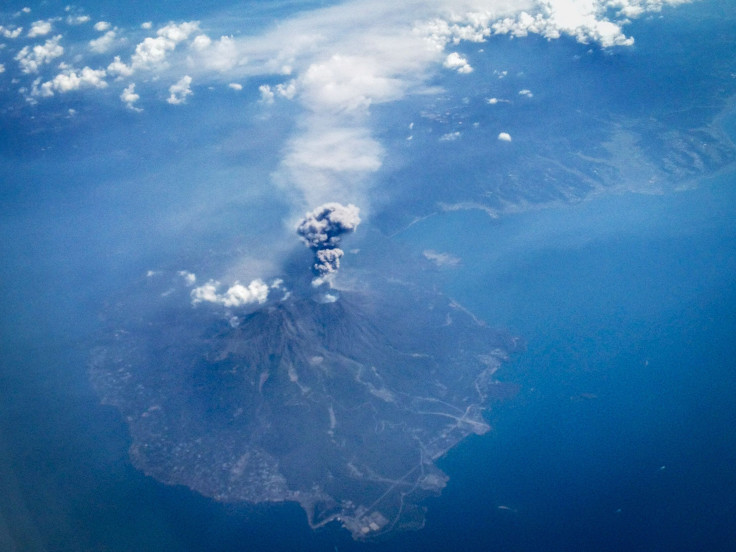Japan’s Sakurajima Volcano: Major Eruption Can Happen Within 30 Years, Study Says

As a pool of liquid magma under the Sakurajima volcano in Japan grows in size, so does the chance of an imminent major eruption, which according to a study published Tuesday, is likely to happen within the next 30 years.
Sakurajima, which is on the southern edge of Japan’s southwestern Kyushu island, is an active volcano that last had a major eruption in 1914, and numerous small explosions occur each year. The volcano sits in the Aira caldera, which is over a dozen miles wide. The magma reservoir beneath the caldera is getting bigger, “growing at quite a fast rate,” which poses a serious threat, according to James Hickey, co-author of the study.
A caldera is a cauldron-shaped depression that is left after a magma chamber under a volcano collapses.
Titled “Thermomechanical controls on magma supply and volcanic deformation: application to Aira caldera, Japan,” the study was published in the journal Scientific Reports on Tuesday. In it, using local topographic and seismic data, along with magma levels below the caldera, the authors conclude that Sakurajima’s major eruptions would be placed roughly 130 years apart. Since the last big one was 102 years ago, it would mean the next one can be expected within the next 30 years or so.
Japan, which is situated on the Pacific “ring of fire,” has numerous active volcanoes, the most famous being Mount Fuji, which last erupted in 1707.
In the words of the study’s authors, which include volcano experts from the U.K.’s Bristol University and the Sakurajima Volcano Research Centre in Japan, “these new inferences are important for eruption forecasting and risk mitigation, and have significant implications for the interpretations of volcanic deformation worldwide.”
© Copyright IBTimes 2025. All rights reserved.





















